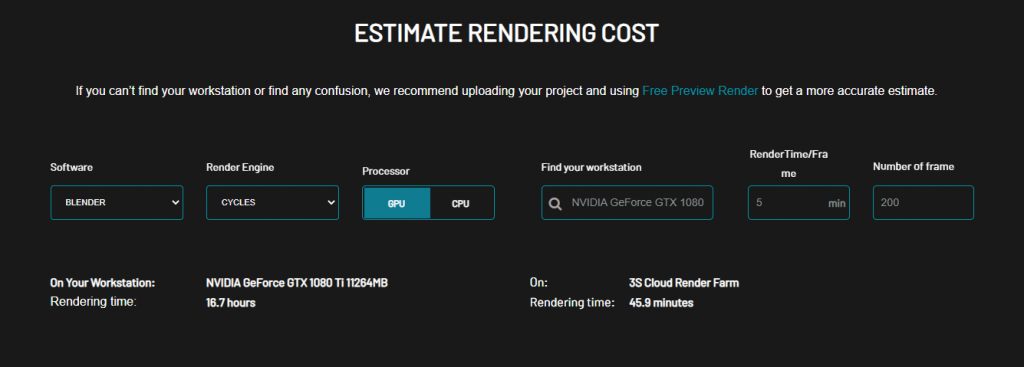A render farm is a group of powerful computers that create complex digital images or animations, often used in film, animation, and architecture. Check out our article on render farms for a basic understanding.
The time a render farm takes depends on various factors. We’ve created an article with examples to help you grasp render farm rendering times better.
Factors That Impact Render Times
When using a render farm, several factors affect how long it takes to get your work done. Here’s a list to help you understand what influences rendering time:
- Scene complexity: If your scene is packed with details, it’ll take longer. Think about the number of objects, textures, and light sources.
- Render size: Bigger resolutions need more time. Consider the aspect ratio and pixel dimensions.
- Frame count: More frames in an animation? Expect a longer wait.
- Quality settings: If you’re aiming for higher quality, like more samples, anti-aliasing, and shadow detail, be prepared for extra rendering time. The choice between CPUs or GPUs also plays a role.
- Render farm hardware: Up-to-date, powerful hardware helps speed up the process.
- Network connection: The time it takes for data to travel between the render farm and your computer matters too. That’s why we created the Transfer Speed Optimizer for quicker file transfers.
Keep in mind that while render farms speed things up, your scene’s requirements still impact render times. Make sure to find the right balance for your needs.
Render Times and Tools
The average rendering time varies based on project complexity, render farm hardware, and other factors we’ve mentioned earlier. Simple scenes on your local machine might take minutes to an hour, while complex scenes could take hours to days or even a week for large renders.
Using GPUs can significantly cut down render times. To estimate your project’s duration, many commercial render farms, like 3S Cloud Render Farm, offer calculators and estimation tools to give you a rough idea of the time needed.

Cost Calculator
The Cost Calculator is design to help users estimate the total cost of their renders job by requesting various inputs related to the project. These inputs include the number of frames, the resolution, and the rendering time per frame. By using this information, the calculator provides an estimated cost for the render job.
To further customize the estimation, the Cost Calculator offers additional options for users to choose from. One such option is priority rendering, which allows users to have their job moved to the front of the rendering queue, ensuring a faster turnaround time. Another option is the utilization of extra CPU cores, which significantly speeds up the rendering process. By considering these options, users can better tailor their render job cost estimations to their specific needs and preferences.
Cost Estimation
This tool estimates the cost by rendering 2-3 test frames of your full animation on the renders farm. After the test renders finish, you get a cost estimate for rendering your entire project’s frame range. These test frames are also integrate into the final project, eliminating the need for re-rendering and extra costs.
Both tools aim to give users a precise cost estimate for their render jobs, based on their project’s unique parameters. This empowers artists to make informed decisions about optimizing their rendering process for the best results within their budget.
Conclusion
In conclusion, render times at a render farm depend on various factors, including scene complexity, hardware, and quality settings. Understanding these factors and using available estimation tools can help you make informed decisions about optimizing your rendering process. By striking the right balance between quality and cost, you can achieve impressive results within your budget and time constraints.
